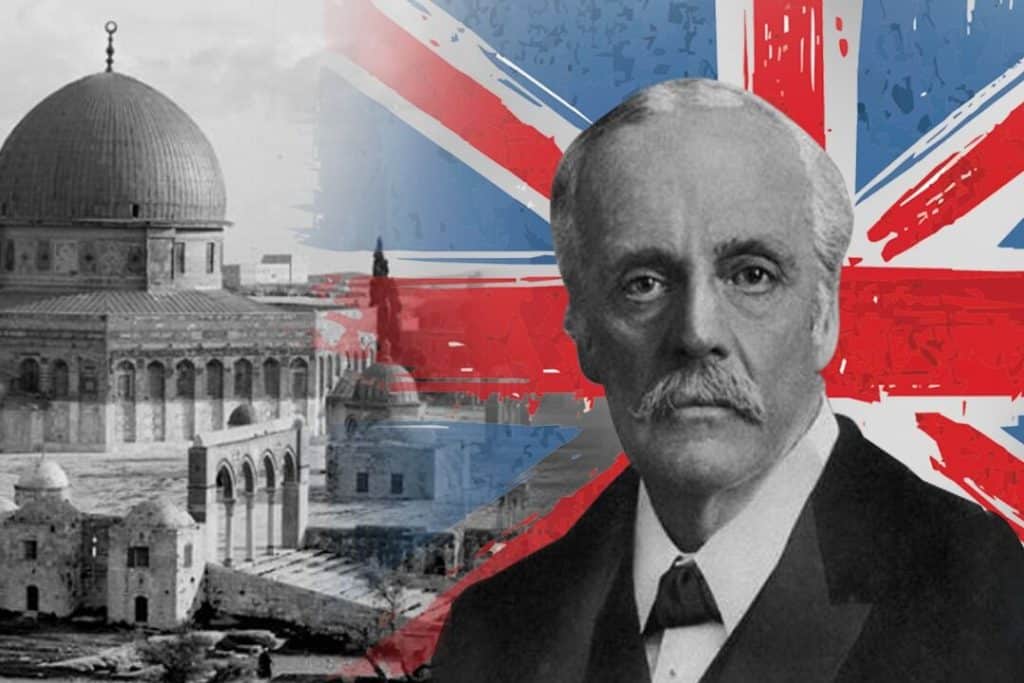How did Britain pledge a Jewish home in Palestine?
At the end of the 19th century, just as Palestine was on the verge of a new era, Zionism emerged. Zionism was a foreign and alien phenomenon that had emerged in Europe in the 16th century as an evangelical Christian project. A significant number of Protestant Christians believed that the return of the Jews to “Zion” was the fulfillment of the promises that God had made to the Jews in the Old Testament. This would pave the way for the second coming of Christ and the beginning of the end of time.
They were the first to consider Jews not as followers of a religion, but as members of a nation or race. These people were especially active in the United States and Britain, and some of them held high positions.
In his book, “Lobbying for Zionism on Both Sides of the Atlantic,” Israeli historian Ilan Pappe shows how more than a century of lobbying has convinced British and American politicians to turn a blind eye to the regime’s flagrant violations of international law, grant it unprecedented military aid, and deny Palestinian rights.
Pappe is known for his critical views, particularly on the “Day of the Catastrophe” and the displacement of Palestinians. He taught at the University of Haifa for many years before emigrating to Britain due to political pressure. He is now a professor of history at the University of Exeter and director of the “European Centre for Palestine Studies.”
We have previously published the translation of chapters one and two of Pappe’s book for the first time in Iran.
Parts one, two, three, four, five, and six of the third chapter of this book, entitled “The Road to the Balfour Declaration,” were previously published. The seventh and final section continues:
The Ministry of Information, the propaganda arm of the British government, commissioned a prominent Zionist activist to persuade Jews around the world to support the Balfour Declaration. He was Albert Montefiore Hymson, a post office clerk. From 1900 onwards, Hymson wrote extensively on Zionism in various publications, with his most important writings appearing in the newsletter of the British Palestine Committee, the main publication of the Zionist lobby.
Hymson was a capable and persuasive writer, and David Lloyd George said that one of Hymson’s articles in the New Statesman had interested him in Zionism. In April 1917, Hymson became editor of the Zionist Review, published by the British Zionist Federation.
The idea of appointing Hymson as head of the Jewish office in the Ministry of Intelligence was put forward by Vladimir Jabotinsky. In this way, Hymson quickly became the most effective propaganda figure of the Ministry of Intelligence and the Zionist Federation.
One of Hymson’s most impressive works was a film entitled “The British Reclaiming Palestine for the Jews,” which was made upon the arrival of General Edmund Allenby in Jerusalem after its occupation in December 1917 and sent to Jewish communities and organizations around the world.
On the cover of Hymson’s book “Palestine: The Rebirth of an Ancient People,” Hymson wrote: “This book enumerates the benefits that the recent Jewish colonization has brought to the land of Palestine.” Of course, “the land” meant Palestine itself, not its people.
Hymson also appointed Jabotinsky as the official British correspondent for Zionist affairs in Palestine. When Herbert Samuel became High Commissioner for Palestine, he rewarded Hymson with a position in the first British Mandate government.
This marks a remarkable career path, from an obscure Zionist advocate to a strategic advisor to the British government on the future of Palestine to a member of the administrative apparatus of a country being colonized. All this happened in the space of four years, when Jews constituted little more than 10 percent of the population of Palestine.
However, I think the most important achievement of lobbyists like Weizmann and Hymson was to win over Lloyd George to the Zionist cause and to convince him that the strategic goals of the British Empire and the Zionist movement were identical. The stage was now set for the finalization of one of the most famous documents in modern Palestinian history.
The Final Drafting of the Balfour Declaration
As British forces advanced into Palestine, aided by the Anzac Corps [1], preparations for the declaration gained momentum. All the politicians in whom the Zionist lobby had invested were now ready to take the process to its final stage. In January 1917, Mark Sykes was promoted to Secretary of the War Cabinet and given responsibility for Middle Eastern affairs. That same month, he began intensive meetings with Nahum Sokolov and Chaim Weizmann.
Weizmann met Arthur Balfour in March 1917, believing that this was the first time he had had a real working conversation with him. Contrary to Balfour’s earlier prediction, the French gradually showed less enthusiasm for “British Palestine” and were met with a cold response in Rome, where the Vatican expressed concern.

